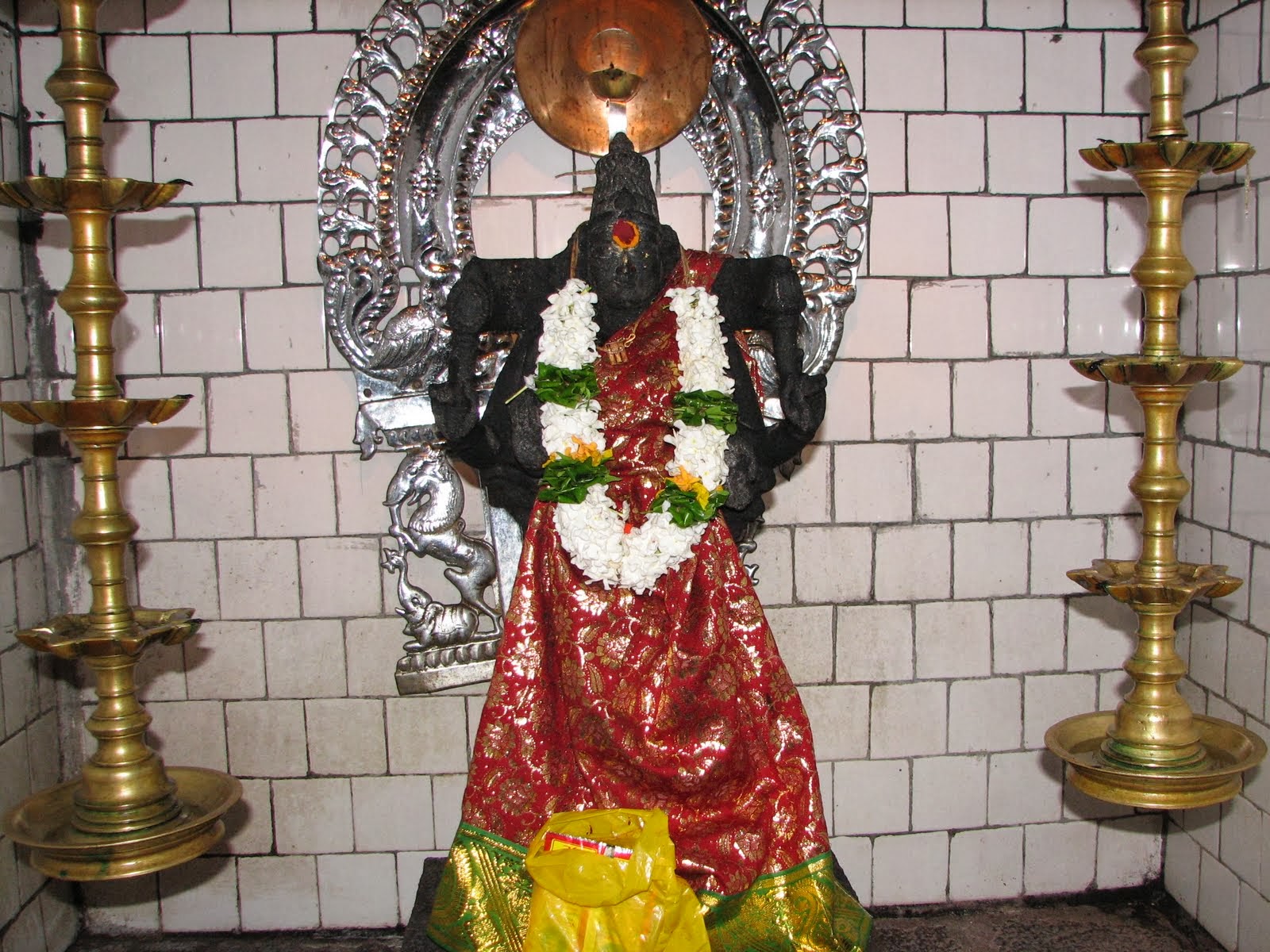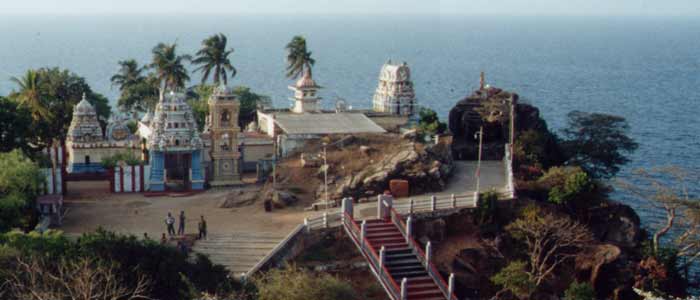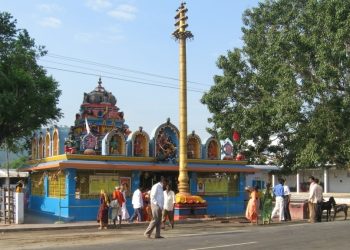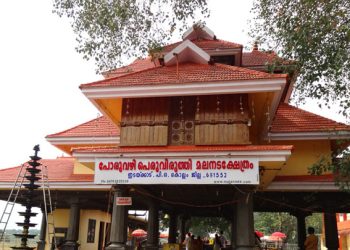It is believed that Satee’s Groin fell here. The temple of ShankariDevi was exactly on the peak of a hill that was ruined by foreign invaders. However, it is believed that the idol of the goddess has been preserved in the present temple which is by the side of the place where the idol originally used to be.
Shrine’s History
Shankari Devi temple in Trincomalee,Srilanka is a prominent temple for Hindus.It is the place where Groin? part of the sati fallen. But it is most rarely visited and it is very least popular in all AstaDasha Shakti Peethas. Shankari Devi temple is situated in an east coast town of Cliffs koneswaram Sri Lanka, Trincomalee.Along with the temple of Shankari Devi, there is a temple of Lord Shiva- Trikoneswara temple. Koneswaram/Trikoneswara temple is believed to have been a major religious shrine since before the arrival of Prince Vijaya 2500 years ago.
Many inscriptions found in the surrounding area speak of Indian Pallava, Chola and even Pandya kings making contributions to the upkeep of the temple indicating an origin in antiquity. Local legend has it that it was renovated by a Tamil Chola king from South India named Kulakottan. This temple is one of the four important Saivite temple connected to the revival of Hinduism in Sri Lanka. The other three temples are situated in Ketheeswaram, Munneswaram and Galle.
There is evidence that indicates a shankarit least some of the later Sinhalese Buddhist kings too maintained the temple although Buddhist King Mahasena was reported to have destroyed it and built a Buddhist temple and Dagoba in its place. This shrine was demolished in 1622 by the Portuguese , who fortified the heights with the materials derived from its destruction. Some of the artefacts from the demolished temple were kept in the Lisbon Museum.
The stone inscription by Kulakottan has a dual fish emblem and is engraved with a prophecy stating that after the 1500s, westerners with different eye colours will rule the country for the ensuing 500 years and at the end of it, the rule will revert back to Vadugus. Trincomalee was next held by the Dutch and subsequently by them and the French alternately, till the capture of Sri Lanka by the British in 1795.
Along with Ketheeswaram in Mannar, this temple was mentioned by one of the Bhakti era Tevaram literature by one of the Nayanmars, namely Sundarar in South India, indicating its popularity even in India. Thirukonasala Vaipavam, written by the poet V. Akilesapillai is an important literary work in Tamil on the history of this temple. After 1505 A.D, the temple was destroyed by Portuguese catholic colonialists (along with countless Buddhist, Hindu and Muslim places of worship around the island), while the main statue was taken out to town for a festive occasion.
At this time Portuguese soldiers entered into the temple dressed as Iyer priests and robbed the temple. The temple was destroyed and its building materials were used in the construction of a nearby fort by the Portuguese. The present status was found when digging a well in Trinco. During the time of Portuguese rule, the statues were hidden in a salted well and were later forgotten. During independence, the ancient statues were finally discovered.
After a gap of almost 450 years, after the Sri Lankan independence, some Sri Lankan Tamil Hindu people of Trincomalee came together and built the present temple in 1952. In size, its very small compared to the original temple.

Shrine’s Map Location and How to Go There
By Road
From Colombo, it is about 280km distance and we should travel through A6 highway to reach Trincomalee.In this journey, we travel from west coast to East coast of Sri Lanka.so that we can see various cultures present in Srilanka.
By Rail
It is about 8 hours journey from Colombo to Trincomalee.
By Air
Trincomalee is well connected by Air route also.Direct flights are present to Trincomalee from Colombo, Chennai, Madurai, Thiruvananthapuram and Bangalore.
Events Celebrated at This Shrine
Navaratri is celebrated here for nine days and is dedicated to various aspects of the Goddess Shankari. These celebrations attract pilgrims from all parts of India.













































